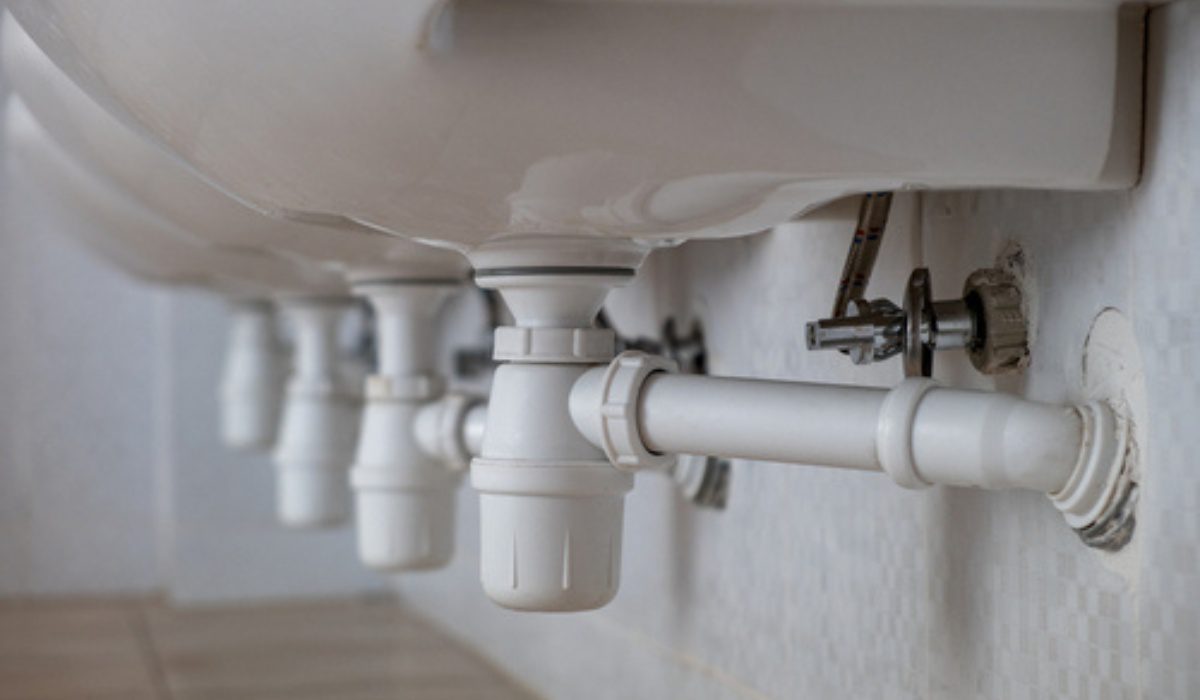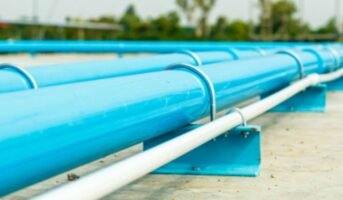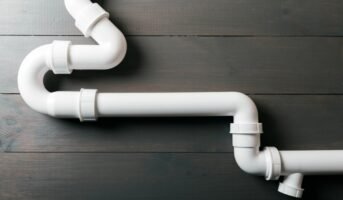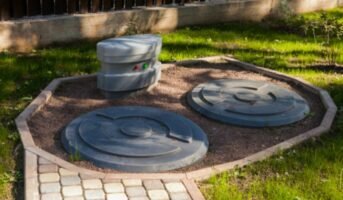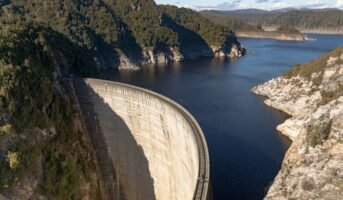A drain pipe is any pipe used to transport water from one location to another. The primary goal is to discard sewage from homes, offices, and industrial areas. Water buildup can lead to flooding, significant damage, soil erosion, and other problems if disposed of improperly and inefficiently. As a result, drain pipes can be used on the job site and in the finished project.
The materials and applications of these drain pipes vary. Because of their material and composition, some drain pipes are used only to dispose of water from specific areas, such as roofs, whereas others are used to move water underground. The drain situation of the project frequently determines the type of drain pipe selected by a contractor.
Due to the seriousness of the consequences of failure, choosing solely on price is usually insufficient. Contractors will consider three factors when selecting drain pipes: strength, size, and ease of installation. Choosing a suitable drainage pipe can take a lot of time and effort. Depending on the material and style, you may need to change the drawings or blueprints for a project or vice versa. Almost all new drain pipes are made of plastic to withstand all weather and ground conditions.

Source: Pinterest
learn about the plumbing fittings
Drain Pipes: Types
The drainage pipes shown below have been classified by material and style. Here are the various drainage pipes available and how and when we should use them.
PVC
Polyvinyl Chloride pipes are the most preferred drainage pipes. Due to the material’s malleability, PVC pipes can be made in almost any size. These pipes are ideal for drainage applications where the water and environment exert a lot of pressure and weight. It is also among the few recyclable plastics. So, if you’re a contractor working on a project where the client wants an environmental approach, PVC might be a good choice. Due to its resilience, durability, and resistance to water and some chemicals, PVC is one of the more rigid pipe types, particularly among plastics.

Source: Pinterest
Concrete
While plastics are the industry standard, concrete can be a low-cost option for drainage systems that use heavy-duty or manufacturing piping. Despite being completely rigid, concrete is employed in projects and situations where zero leaks are required. Concrete piping can also be used as an exterior shell for other drainage pipes of other materials. In this case, the concrete would act as an outer shell to protect a weaker or even more vulnerable line.

Source: Pinterest
Polyethylene
This is the most adaptable type of plastic pipe. Because of the ease with which polyethene can be manipulated, getting these types of pipes installed is extremely simple. Polyethylene pipes are likely the best choice if the project needs piping and water to be converted into small spaces with many turns.

Source: Pinterest
Cast Iron
Cast iron drain pipes can rust, but they can be protected using rust prevention products. If these products are installed in a way they are visible, they create a stylish, classic, and traditional look in your home. Many homeowners find this appealing. Cast iron pipes are primarily available from major piping manufacturers, and you will have various size and thickness options. These pipes are frequently painted, and you can get them in almost any colour you want.

Source: Pinterest
Galvanised pipes
Galvanised drain pipes are designed to last. The pipes have been dipped in molten zinc, which increases their durability. In addition, they are designed to be rust-resistant. Unfortunately, galvanised pipes are typically more costly than other drain pipes due to the complex manufacturing process. On the other hand, these pipes can be used almost anywhere in your home.

Source: Pinterest
Drain pipes: How long do they last?
Few things last aeons in this world, but a decent set of drainage pipes can definitely last the period of a decades-long residential occupancy. However, if the pipes that run into and out of your home were placed previous to the Apollo 11 moon landing and have not been maintained at any point in the intervening decades, your pipes are likely to require maintenance, repairs, or retrofitting within the next ten years.

Source: Pinterest
Drain pipes: How to prevent water pipe clogs
Running water is taken for granted in most homes. People rarely think about how water enters and exits the house, from sinks, dishwashers, and washing machines to showers, toilets, and outside hoses. As a result, the average resident frequently places undue strain on their water supply without thinking about the consequences.
Whether it’s flushing off the food particles and hairs or going faucets at high temperatures and pressures, the amount of stress that water pipes go through is rarely considered by the user. Most people only think about the limits of water pipes when clogs occur.
When you have a clogged drain, call a plumber
If a clog occurs in a home drain pipe, the best solution is to call a plumber and have the pipeline professionally slithered. As a result, the drain pipe will be protected from harmful chemicals that could shorten its lifespan and eventually lead to a more serious plumbing problem.
From then on, precautions must be taken to prevent clogs from recurring. After all, experiencing the uneasiness and downfalls of even a brief plumbing backup can inspire a newfound appreciation for the importance of water in everyday functions.
Throw away unused food in the trash
Of course, the solution to clogs is only to allow suitable fluids to enter your drains. No food particles should be flushed into the pipes unless you have a garbage disposal in your kitchen sink.
Whether you hand-wash your dishes or use a dishwasher, scrape all food remnants into a trash bag and dispose of them in a trash can outside for weekly pickup. Similarly, if food crumbs remain on a countertop after a meal has been prepared, dispose of them in the garbage, not the sink.
Place a filter over the kitchen sink faucet to prevent stray particles from falling down the drain.
Drain pipes: Home cleaning techniques that work
Products designed to clear drain clogs provide immediate relief at the expense of your pipes’ long-term stability. There are products available over the counter to prevent clogging; however, they are not the type of products sold for plumbing purposes.
Baking soda and vinegar are the products in question, and they can remove grease, soapy residue, and other deposits from your out-of-line piping. No, these products will not provide the surefire, instant satisfaction of bleach, but they will help prevent the kinds of buildups that would necessitate the purchase of bleach.
Baking soda and vinegar
Sprinkle a dash of baking soda down the drain of your kitchen sink every day or two and flush it with hot water. Baking soda’s cleaning properties can dissolve dirt and grime before it takes hold.
In addition, baking soda freshens up the aroma of drains, which helps combat odours that might otherwise be present. Next, pour one cup of vinegar into the kitchen sink drain every two months and let it soak for half an hour. Vinegar’s acetic acid is a cleaning agent, removing foreign deposits from piping interiors.
The same method can be used to clean bathroom sinks and shower drains.
FAQs
What type of drain pipe is used for a sink drain?
PVC piping is typically used as part of a sink, toilet, or shower drain line, but it is also used as a home's main water supply pipe on occasion.
What size should drain pipes be?
Toilets require pipes 3 inches in diameter. Washing machines and laundry sinks require 2-inch drain pipes in showers and bathtubs. A 1.5-inch drain pipe is required for sinks.
Housing News Desk is the news desk of leading online real estate portal, Housing.com. Housing News Desk focuses on a variety of topics such as real estate laws, taxes, current news, property trends, home loans, rentals, décor, green homes, home improvement, etc. The main objective of the news desk, is to cover the real estate sector from the perspective of providing information that is useful to the end-user.
Facebook: https://www.facebook.com/housing.com/
Twitter: https://twitter.com/Housing
Email: [email protected]
